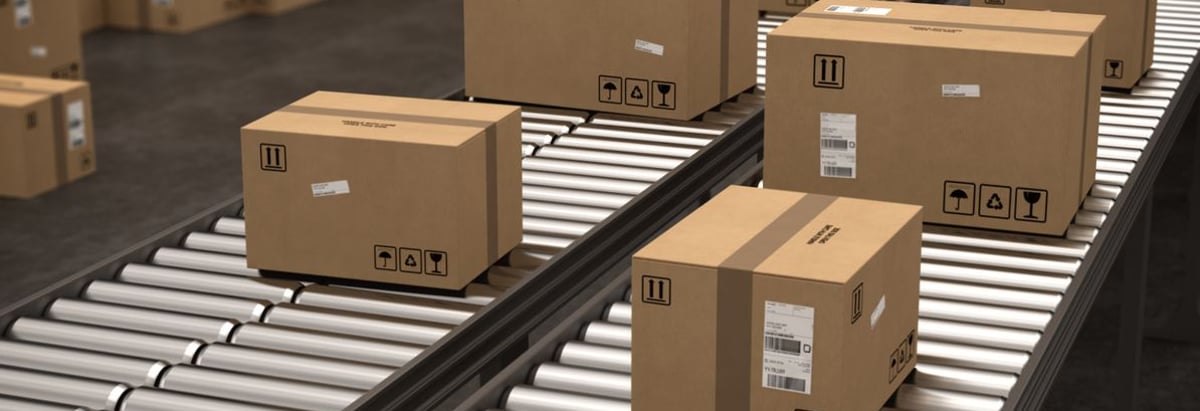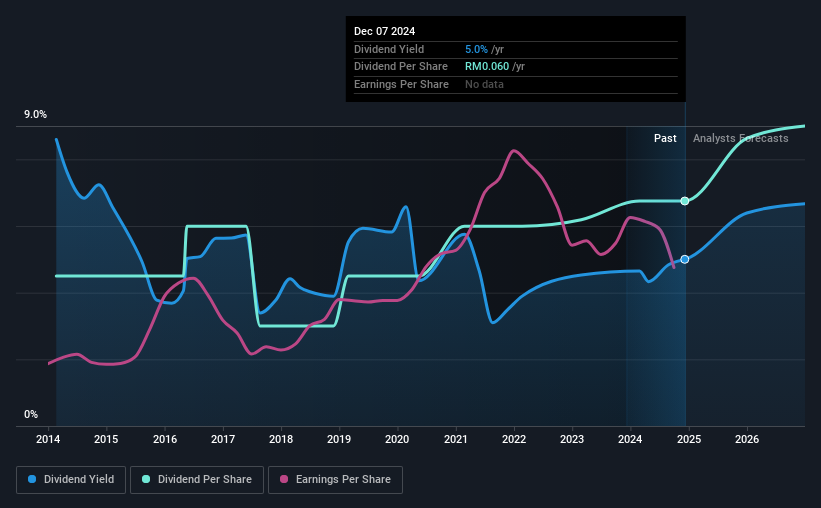Why It Might Not Make Sense To Buy BP Plastics Holding Bhd. (KLSE:BPPLAS) For Its Upcoming Dividend

BP Plastics Holding Bhd. (KLSE:BPPLAS) stock is about to trade ex-dividend in 3 days. The ex-dividend date is one business day before the record date, which is the cut-off date for shareholders to be present on the company's books to be eligible for a dividend payment. The ex-dividend date is an important date to be aware of as any purchase of the stock made on or after this date might mean a late settlement that doesn't show on the record date. This means that investors who purchase BP Plastics Holding Bhd's shares on or after the 12th of December will not receive the dividend, which will be paid on the 27th of December.
The company's next dividend payment will be RM00.015 per share, and in the last 12 months, the company paid a total of RM0.06 per share. Based on the last year's worth of payments, BP Plastics Holding Bhd has a trailing yield of 5.0% on the current stock price of RM01.20. We love seeing companies pay a dividend, but it's also important to be sure that laying the golden eggs isn't going to kill our golden goose! That's why we should always check whether the dividend payments appear sustainable, and if the company is growing.
Check out our latest analysis for BP Plastics Holding Bhd
Dividends are typically paid from company earnings. If a company pays more in dividends than it earned in profit, then the dividend could be unsustainable. BP Plastics Holding Bhd is paying out an acceptable 63% of its profit, a common payout level among most companies. A useful secondary check can be to evaluate whether BP Plastics Holding Bhd generated enough free cash flow to afford its dividend. The company paid out 101% of its free cash flow over the last year, which we think is outside the ideal range for most businesses. Cash flows are usually much more volatile than earnings, so this could be a temporary effect - but we'd generally want to look more closely here.
BP Plastics Holding Bhd does have a large net cash position on the balance sheet, which could fund large dividends for a time, if the company so chose. Still, smart investors know that it is better to assess dividends relative to the cash and profit generated by the business. Paying dividends out of cash on the balance sheet is not long-term sustainable.
BP Plastics Holding Bhd paid out less in dividends than it reported in profits, but unfortunately it didn't generate enough cash to cover the dividend. Were this to happen repeatedly, this would be a risk to BP Plastics Holding Bhd's ability to maintain its dividend.
Click here to see the company's payout ratio, plus analyst estimates of its future dividends.

Have Earnings And Dividends Been Growing?
Companies with consistently growing earnings per share generally make the best dividend stocks, as they usually find it easier to grow dividends per share. If earnings decline and the company is forced to cut its dividend, investors could watch the value of their investment go up in smoke. With that in mind, we're encouraged by the steady growth at BP Plastics Holding Bhd, with earnings per share up 4.6% on average over the last five years. Earnings have been growing somewhat, but we're concerned dividend payments consumed most of the company's cash flow over the past year.
The main way most investors will assess a company's dividend prospects is by checking the historical rate of dividend growth. Since the start of our data, 10 years ago, BP Plastics Holding Bhd has lifted its dividend by approximately 4.1% a year on average. We're glad to see dividends rising alongside earnings over a number of years, which may be a sign the company intends to share the growth with shareholders.
To Sum It Up
From a dividend perspective, should investors buy or avoid BP Plastics Holding Bhd? BP Plastics Holding Bhd is paying out a reasonable percentage of its income and an uncomfortably high 101% of its cash flow as dividends. At least earnings per share have been growing steadily. It's not an attractive combination from a dividend perspective, and we're inclined to pass on this one for the time being.
With that being said, if you're still considering BP Plastics Holding Bhd as an investment, you'll find it beneficial to know what risks this stock is facing. For example, we've found 2 warning signs for BP Plastics Holding Bhd that we recommend you consider before investing in the business.
A common investing mistake is buying the first interesting stock you see. Here you can find a full list of high-yield dividend stocks.
Valuation is complex, but we're here to simplify it.
Discover if BP Plastics Holding Bhd might be undervalued or overvalued with our detailed analysis, featuring fair value estimates, potential risks, dividends, insider trades, and its financial condition.
Access Free AnalysisHave feedback on this article? Concerned about the content? Get in touch with us directly. Alternatively, email editorial-team (at) simplywallst.com.
This article by Simply Wall St is general in nature. We provide commentary based on historical data and analyst forecasts only using an unbiased methodology and our articles are not intended to be financial advice. It does not constitute a recommendation to buy or sell any stock, and does not take account of your objectives, or your financial situation. We aim to bring you long-term focused analysis driven by fundamental data. Note that our analysis may not factor in the latest price-sensitive company announcements or qualitative material. Simply Wall St has no position in any stocks mentioned.
About KLSE:BPPLAS
BP Plastics Holding Bhd
An investment holding company, engages in the manufacturing and trading of plastic products in Malaysia, rest of Asia, and internationally.
Flawless balance sheet with moderate growth potential.
Market Insights
Community Narratives





